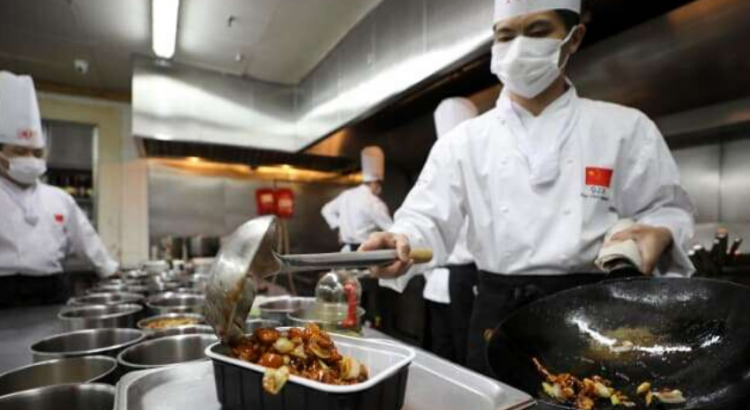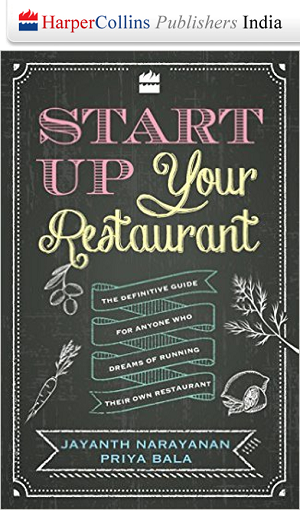
I happened to watch The Perfect Storm, starring George Clooney, a few days ago and couldn’t help comparing the the restaurant industry today to the Andrea Gail, the shipping vessel that gets caught in a fearful storm.
While this has never been an easy business, over the last two years the industry has found the sailing especially tough. It has faced not one storm but many. They have come in the following forms:
The online aggregators: With an abundant arsenal of money, they dramatically changed the dynamics of the restaurant business. They increased consumption through deliveries and made restaurants sweat it out convincing (the italics are deliberate) them with the old theory that higher sales would lead to bigger profits. Without understanding the long-term impact of this, the industry embraced the delivery business for short-term revenue gains. By the time the industry realized that it was simply on a treadmill going nowhere, it was too late. The aggregators had altered consumer behaviour. Most restaurant businesses today know that the high commission costs coupled with the marketing and discount spends needed for the delivery business, make the entire model unviable. The situation was made worse for restaurants with the aggregators setting up their own brands and kitchens with the vast data they collected from the restaurants in the first place.
Ban on alcohol sales near highways: After investing large sums of money on setting up bars and restaurants and coughing up more for liquor licences, several bars were dealt a blow overnight when the Supreme Court banned the sale of alcohol within 500m of state and national highways. It showed how vulnerable the industry was to laws and regulations that could be introduced at any time. The F&B industry survived this storm a little better because several large hotels were also impacted and they had more lobbying power and got urban areas exempted from the ban.
The activism of resident welfare associations: This was an issue most pronounced in Bangalore where resident associations took on restaurants in their localities. It became clear the system was tilted against the industry and that the civic authorities exercise power without any accountability or responsibility. Business which were operating on valid licences issued by the government were suddenly told to stop playing music and even to shut shop, because they were creating parking problems and noise pollution. While property owners on the main streets enjoyed the commercial benefits of turning over their land or buildings to restaurant businesses, those in the less-in-demand by-lanes of these neighbourhoods headed the protests. This scenario also reflects the government’s failure to prevent large-scale property use conversions, possibly driven by officers at the local level who sanctioned these for their own gains.
GST: The introduction of this tax saw the industry being battered again. With restaurants, like all other businesse grappling with the changes in the tax regime when GST was implemented, the government dealt a crushing blow by removing GST input credit for the industry. This was a poorly thought-out knee-jerk response by the government, seemingly to quell public anger against increased costs due to GST. Pick an industry that touches a large segment of the population and do something there and it will appease the people, was the thinking. As it happened, the finance ministry under Arun Jaitley picked the restaurant industry for this. The real impact of the GST input credit withdrawal is estimated to be 5-8 percentage points in operating margins. The real margins restaurateurs were operating in was in that range. So this decision wiped out profits and increased operational costs significantly. While sections of the industry fumed, not being organized well enough, they didn’t have enough clout to lobby with the government to reverse this decision, unlike in the highway alcohol ban case.
Ban on plastic: As concerns about environmental damage mounted, the government imposed a ban on several disposable plastic items with little clarity on what restaurants could use and what they couldn’t. The lack of sufficient notice and the ambiguities gave local authorities unlimited power to fine restaurants based on their interpretation of the regulations. Restaurants were slapped with fines ranging from Rs 5,000 to Rs 50,000 because an official found a piece of cling wrap in the garbage, saw mint leaves stored in a plastic bag or because a black plastic container was used for deliveries rather than a white one. The ban drastically changed the way restaurants managed hygiene; they could no longer use cling wrap, garbage bags and aluminium foil. In the midst of this, someone in the government realized that the material used in signboards was a plastic variant (flex). In Bangalore, local authorities came around with sickles mounted on poles and started bringing down signboards. The corporation also imposed a rule that 60% of the words on sign boards should be in the local language and used that to destroy even expensive acrylic sign boards. This was harassment at an unprecedented level. To add to the woes of restaurateurs, the soft drink majors managed to lobby with the government and get a waiver for using disposable plastic for their products. All the big food companies, including the government’s own milk federations, continue to use disposable plastic for packaging. The restaurant industry has simply looked on, helpless.
Increase in minimum wages: Several states also increased minimum wages significantly in urban areas in 2018, from the Rs 5000-6000 range to Rs 10,000-12,000. This increased labour costs and also statutory costs, since PF, ESI, statutory bonus, double pay during national festivals and holidays and paid leave computations are all based on minimum wages. The industry seemed not to grasp the actual cost impact; this could also be because not all restaurant companies are professionally run and are fully compliant. But, in our assessment, labour costs shot up by about 20-25% for professionally run companies.
Zomato Gold program: This was one storm the industry tackled well. The online review sites launched aggressive discounting programs for dine-in customers (Zomato Gold, Dine-out Plus etc.) and the restaurants which signed up quickly realized that while these would lead to higher footfalls, sales figures would not really improve and profitability would actually take a hit. So before the customer behaviour could be altered completely — like in the case of deliveries — the industry got together and fought off the discount programs that promised much but delivered little.
In addition to these, there have been several minor storms the industry has had to deal with: new FSSAI regulations with painful compliance requirements, managing social media and review websites where dissatisfied customers ran amok, new fire safety norms and inflation in food costs such as the noticeable onion price increase in December 2019 and the not-so-talked-about increase of 100 % to 200 % in the cost of several spices.
Having been thus assaulted over the last two years, restaurants were barely managing to survive. The Corona virus storm has come at a time when restaurant businesses just don’t have any fight left in them. Cash flows have been drying up. Uncooperative landlords have several months of rent as deposit with them and that diminishes any chance of getting them to truly waive rental costs; ‘2 to 3 months ka rent deposit mein adjust kar lenge’ will probably be the best thing most restaurateur can hope to hear. Restaurateurs have no access to any credit from banks/financial institutions. They depend on suppliers who mainly work on a cash & carry model and on small vendors whose livelihood depends on the money restaurateurs pay them and who cannot be pushed for more credit. Most dishearteningly they are at the mercy of a government which will probably come up with an economic package for the big boys such as aviation and hotels, but will ignore small restaurant businesses. Given this reality, this may be a storm that will see several restaurants go under.
The characters of George Clooney and Mark Wahlberg fight till the end in The Perfect Storm. We know the industry will, too. We hope for a miracle to save the restaurateurs and the 7 million-plus employees whose livelihood depends on this industry.
This is a radical statement to make, but a better approach to battling the Corona virus in India may have been for the government to focus all its resources towards the high-risk and vulnerable sections of the population, subjecting them to testing and providing them with the best medical care possible and allow some level of economic activity. While the government’s response appears to be designed also to allay fear, there are experts who are advocating – albeit less vociferously – a rationalized approach that would have caused less damage to the economy and livelihoods. We hope the restaurant industry will weather this calamity and sail on calm waters again.










